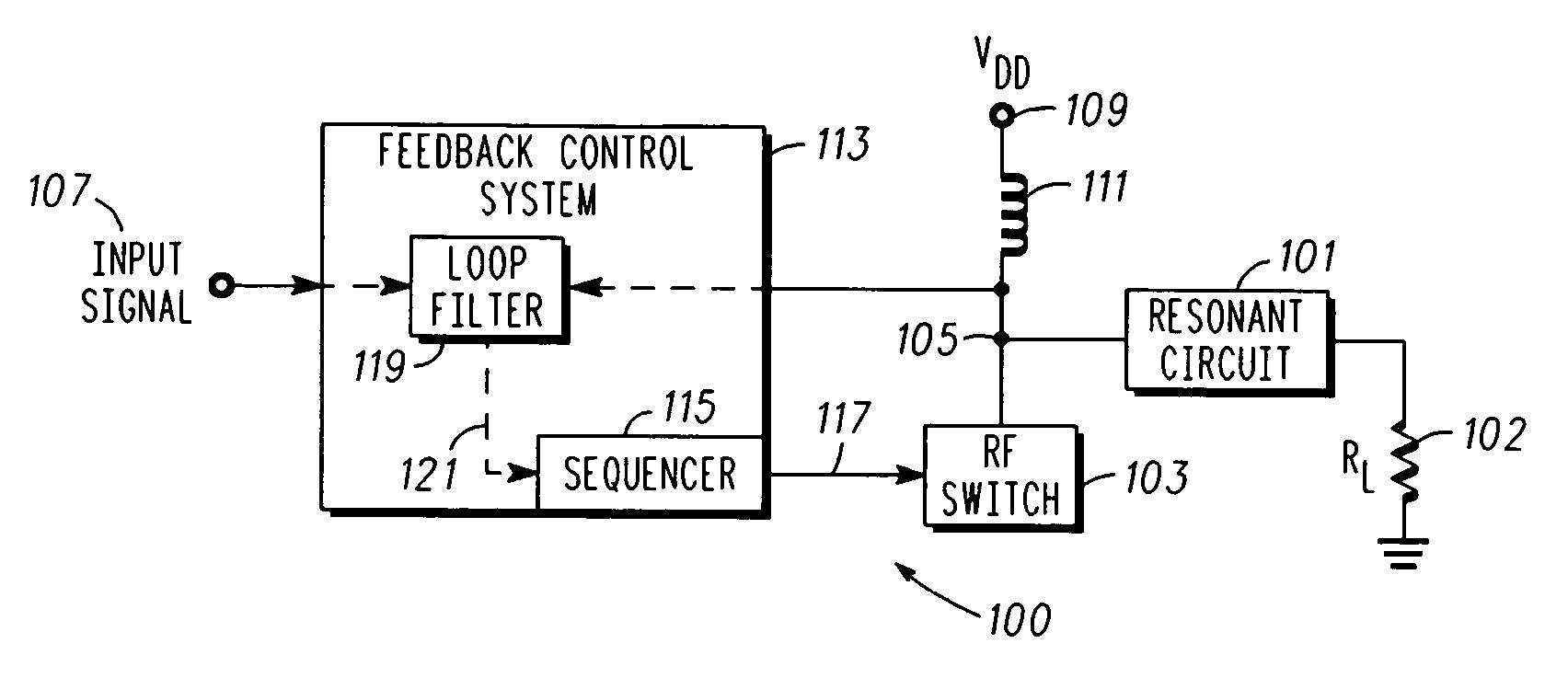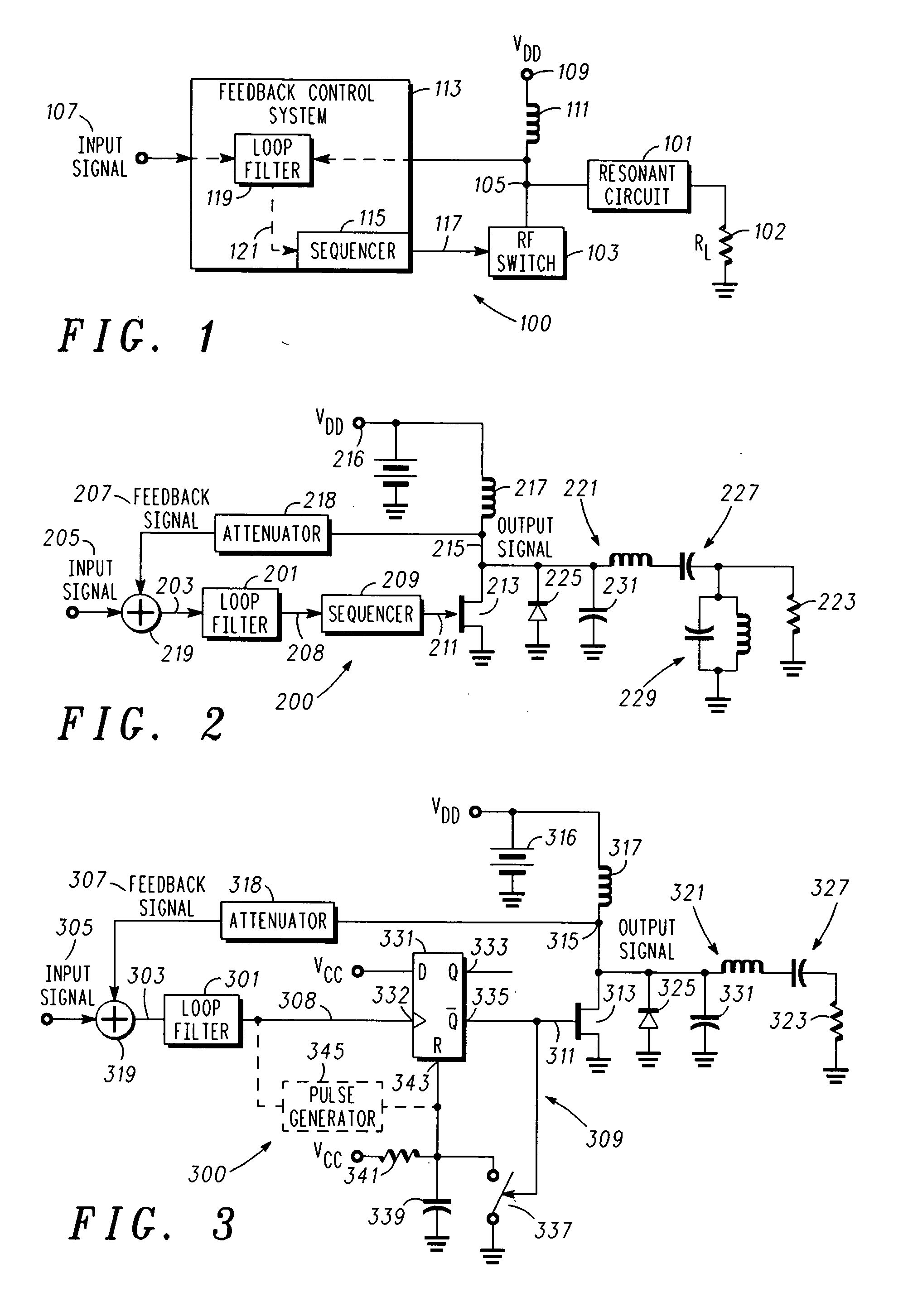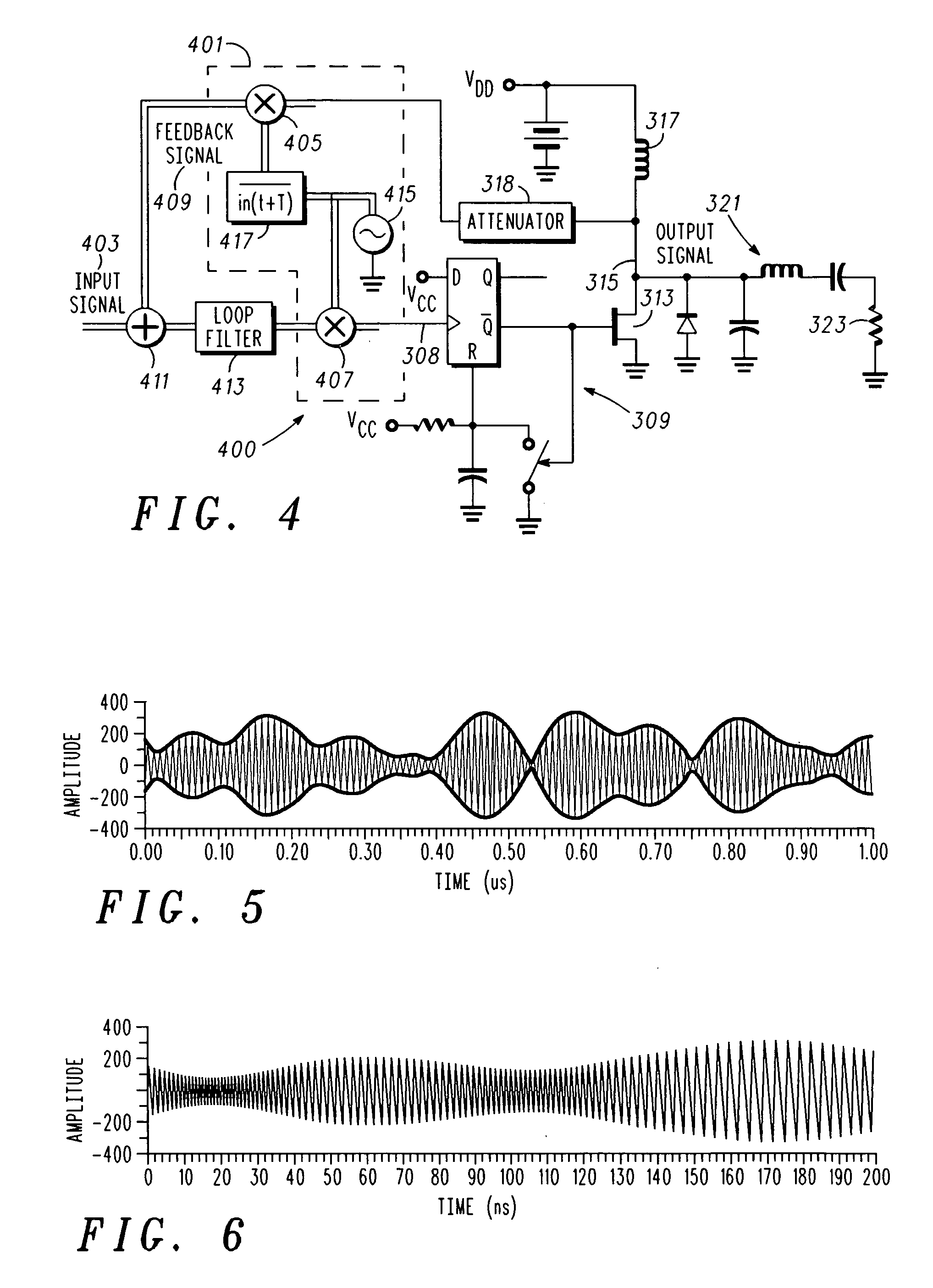Radio frequency power amplifier and corresponding method
a radio frequency power amplifier and power supply technology, applied in the direction of amplifiers with negative feedback circuits, amplifiers with semiconductor devices/discharge tubes, etc., can solve the problems of difficult or impossible to accurately receive/demodulate signals, battery size and hence weight and cost increase directly with power requirements,
- Summary
- Abstract
- Description
- Claims
- Application Information
AI Technical Summary
Problems solved by technology
Method used
Image
Examples
Embodiment Construction
[0019] In overview, the present disclosure primarily concerns communication equipment including radio frequency transmitters or amplifiers such as used in infrastructure equipment including base stations or in communications units. Such radio frequency amplifiers for example, may be found in cellular, two-way, and the like radio networks or systems in the form of fixed or stationary and mobile equipment. The fixed equipment is often referred to as base stations or transmitters and the mobile equipment can be referred to as communication units, devices, handsets, or mobile stations. Such systems and equipment are normally used to support and provide services such as voice and data communication services to or for such communication units or users thereof.
[0020] More particularly various inventive concepts and principles are embodied in systems or constituent elements, communication units, transmitters and methods therein for providing or facilitating radio frequency amplifiers or po...
PUM
 Login to View More
Login to View More Abstract
Description
Claims
Application Information
 Login to View More
Login to View More - R&D
- Intellectual Property
- Life Sciences
- Materials
- Tech Scout
- Unparalleled Data Quality
- Higher Quality Content
- 60% Fewer Hallucinations
Browse by: Latest US Patents, China's latest patents, Technical Efficacy Thesaurus, Application Domain, Technology Topic, Popular Technical Reports.
© 2025 PatSnap. All rights reserved.Legal|Privacy policy|Modern Slavery Act Transparency Statement|Sitemap|About US| Contact US: help@patsnap.com



